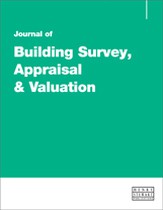How monitoring can inform and support the retrofit of traditional buildings
Abstract
The climate crisis creates an imperative to improve the energy efficiency of our traditional buildings and retrofitting offers opportunities to reduce their energy usage, while creating more comfortable spaces that are affordable to run. Little is known about the performance of traditional buildings, however, and retrofitting may also present risks, particularly with regard to moisture, for both fabric and occupants. Measuring and monitoring the performance of these building is a way to overcome this knowledge gap. By deploying a variety of techniques, it is possible to engage with the complexity of a traditional building to ensure a more informed approach. Monitoring can be used to educate design decisions, provide more accurate input data for modelling, target measures, test treatments, measure effectiveness and guard against risks. It can improve the effectiveness of retrofitting and provide more confidence for retrofitting practices. This paper draws on our experience of providing monitoring services to illustrate some of the ways monitoring can be used to benefit retrofitting. Incorporating measurement and monitoring into retrofit projects ensures that both current and future retrofitting work will genuinely increase the energy efficiency of a traditional building while minimising risks.
The full article is available to subscribers to the journal.
Author's Biography
Caroline Rye has a background in both practical building and academic research. She completed one of the UK’s first practice-based PhDs at Napier University in 2000 and went on to work as a research fellow at the University of Bristol developing practice-as-research methodologies. In 2010 she undertook an MSc in historic building conservation and then, in collaboration with Cameron Scott, was able to combine her two interests in buildings and research through the formation of ArchiMetrics Ltd. Caroline is the author of a number of research papers and reports including The Responsible Retrofit for Traditional Buildings Report for the Sustainable Traditional Buildings Alliance (STBA) and was part of the team that delivered the STBA Retrofit Guidance Wheel. She is a technical consultant on behalf of the STBA and sits on the Society for the Protection of Ancient Buildings’ (SPAB) Technical Panel, for which, along with Cameron Scott, she has also undertaken research published as The SPAB Building Performance Research Reports. She has chaired the UK Centre for Moisture in Buildings Technical Working Group for monitoring and currently sits on the drafting panel for British Standards Committee CB/401-0-/01 – Building Performance Evaluation.
Cameron Scott has been working in the field of sustainable architecture for the past 30 years, establishing the design studio Cameron Scott Limited in 2002. The building research element of Cameron’s work has grown out of a desire to understand how completed projects function in reality so as to further inform the performancebased design process to optimise building quality and shorten the learning feedback loop. The aim is a functional architecture that provides a wellmoderated internal environment for the minimum of inputs while keeping constructability and low building maintenance at the front of design considerations. Archimetrics Ltd has grown out of a mutual collaboration with Caroline Rye with a shared interest in sustainable architecture. Cameron is primarily responsible for developing the research questions, methodologies, protocols and analytics used by ArchiMetrics, along with designing and building the bespoke monitoring equipment required to answer the specific questions in hand. The principles of performance-based design, construction methodology and the importance of detail underpin Cameron’s work in the fields of architecture, design and research.
Citation
Rye, Caroline and Scott, Cameron (2022, March 1). How monitoring can inform and support the retrofit of traditional buildings. In the Journal of Building Survey, Appraisal & Valuation, Volume 10, Issue 4. https://doi.org/10.69554/QKZH8564.Publications LLP
